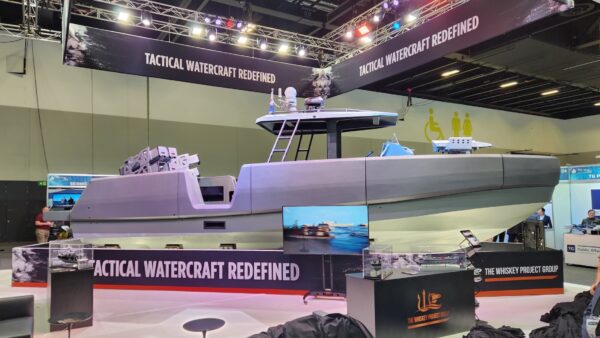
Pacific Patrol Boat (PPB) 40 patrol vessels are being developed by Australian shipbuilding company Austal under the Pacific Patrol Boats Replacement (PPBR) project, which is aimed at replacing the existing Pacific Patrol Boats fleet.
The replacement patrol vessels will be donated to 12 Pacific Island nations to help improve maritime security in extensive exclusive economic zones of the South Pacific region. The boats are also suitable for fisheries protection, search-and-rescue, patrol, and prevention of transnational crime.
The PPBR project is part of Australia’s new pacific maritime security programme.
Pacific Patrol Boat 40 construction details
The Australian Government issued the request for tender for 21 replacement patrol vessels in March 2015. Austal was selected as the preferred bidder for the PPBR project in April 2016.
Austal received a contract worth $305m from the Turnbull Government to serve as the prime contractor for the PPBR project in May 2016. The contractual scope includes design, construction and delivery of 19 replacement vessels and an option for an additional two boats.
Under the contract, Austal will offer support services to the replacement patrol boats initially for seven years. Construction will be carried out at Austal’s shipyard in Henderson, Western Australia, whereas through-life support will be provided at Cairns Service Centre in Queensland.
The construction is anticipated to start in the middle of 2017 and will continue until 2023. The first vessel is expected to be delivered at the end of 2018.
Related Suppliers
EXPAL – Technological Solutions, Weapons and Ammunition for Marine Security and Defence
At EXPAL, we develop, manufacture, integrate and maintain equipment…
Comrod Communications Group – Defence and Shipboard MF to UHF Antennas, Antenna Combiners / Diplexers and Control Systems
Comrod is world renowned for its superior quality defence and…
SPC Promelectronica – Naval Navigation Equipment and Marine Computers
The major activity of Scientific-Production Concern Promelectronica…
Design and features of replacement patrol boats
The new replacement patrol boats are larger than the existing PPB fleet. The steel monohull design of the new fleet provides improved seakeeping ability and long endurance.
Each vessel will have an overall length of 39.5m, an overall beam of 8m, a loaded draught of 2.5m, and a cargo deck area of 16m². It can accommodate up to 23 personnel.
Operation and control of the vessel is performed from the raised wheel house, located amidships. The wheel house is provided with windows, which offer unobstructed view of the sea surface.
The vessel can carry a Work Ribs (WRH635FRB) fast rescue boat, certified by SOLAS. Driven by two 90hp Yamaha outboard motors, the fast rescue boat can seat 15 persons.
A launch and recovery system fitted at the stern is used to deploy and retrieve the fast rescue boat. The new patrol boat also features GW / BW discharge pumps, saltwater WC flush system, fuel coalesce, and atmospheric crankcase breathers.
PPB main armament
The PPB replacement vessel’s main armament is a 30mm calibre gun, while it will also be armed with 0.50 calibre general-purpose machine guns on port and starboard sides.
Onboard sensors
The new builds will be equipped with a number of commercial off-the-shelf (COTS) navigation and communications equipment to ensure safe and efficient operation.
The navigation sensors aboard the vessels include gyrocompass, X-Band radar, differential global positioning system (DGPS), depth sounder, electronic chart system, and autopilot.
The communications systems include Inmarsat C, HF and VHF radio direction finder, SatCom (satellite communications), VHF / DSC radios, MF / HF DSC radios, VHF Aeroband radio, and UHF military radio.
Propulsion and performance of PPB
The PPB will be driven by two Caterpillar 3516C engines, each generating an output power of 2,000bkW at 1,600rpm.
The engines are controlled electronically to deliver improved fuel consumption. Each engine is connected to a fixed pitch propeller through a ZF 76000 gearbox.
The vessel is capable of sailing at a speed of 20kt and can reach up to a range of 3,000nm when sailing at a speed of 12kt.
SOURCE: Navaltechnology.com


